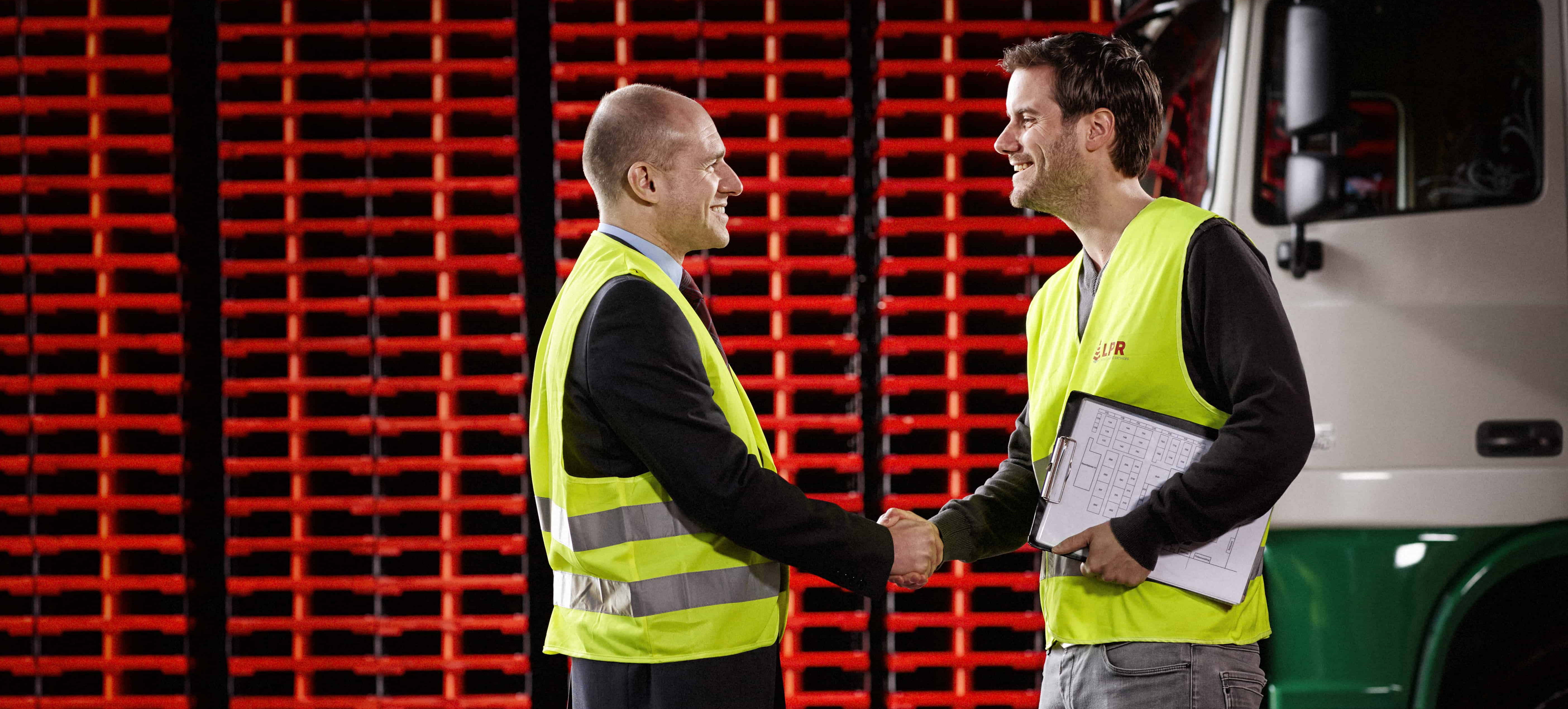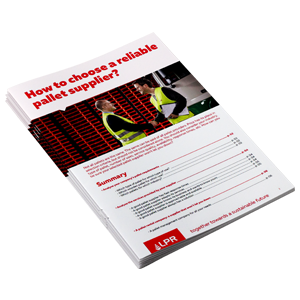Implementing Green Supply Chain Management (GSCM) allows businesses to respond to the climate crisis and global warming.
Businesses operating within the supply chain are at the heart of discussions and are often cited as one of the main causes of pollution generated by the manufacturing industry and the transport of goods.
As a result, companies must rethink their current activities.
The “greening” of supply chain management is often enforced rather than chosen by companies. They tend to be driven by the need to comply with new standards and regulations imposed.
However, a more sustainable and ecological management of the supply chain represents a real opportunity for growth for manufacturers.
Its implementation provides opportunities to save money, while reducing the impact on the environment.
A green supply chain is also a great way to improve the image and green credentials of a business.
In this article, discover what Green Supply Chain Management is, the reasons why it is a driver of profitability for companies and how to implement it.
Quick Navigation:
1 - Green Supply Chain Management : definition
2 - Why switch to Green Supply Chain Management?
3 - How to set up a green supply chain?
I - Green Supply Chain Management : Definition
An ecological and sustainable supply chain is one that takes ecological initiatives at every stage, including but not limited to:
-
Supply of raw materials
-
Product manufacturing
-
Storage
-
Transport and distribution
According to a study published by the University of Bowling (2012), Green Supply Chain Management is involved at:
-
product development
-
product production
-
transportation
-
packaging
-
storage
-
product life cycle
In short, the environmental dimension must be a component of all stages of the life of a product, from its design, to its eventual recycling.
This requires rethinking the entire supply chain to reduce its environmental impact.
Sustainable supply chain management involves:
-
Redefining the company's logistics strategy by adopting an overarching environmental policy.
-
Implementing concrete measures to reduce the environmental impact of the company's activities.
-
Monitoring the company’s effectiveness through consistent key performance indicators (KPIs).
Although this process may seem tedious, its completion allows companies to reap rewards!
II - Why switch to Green Supply Chain Management?
Reduction of CO₂ emissions, reduction of waste, and the preservation of resources: a green supply chain has an undeniably positive impact on the planet.
Several world-renowned companies are already working actively to reduce the environmental impact of their activity. UPS is investing heavily in electric vehicles that also run on natural gas to significantly reduce its greenhouse gas emissions.
1 - Anticipation of future regulations thanks to a sustainable supply chain
Public policies sanctioning the highest polluting companies have existed for years in the majority of Western countries and are consistently getting stricter.
Rather than suffer the effects of future regulations, companies that choose to adopt a sustainable supply chain today, avoid paying penalties and being the target of sanctions tomorrow.
By pre-empting change, they can make the transition to a more environmentally friendly approach in a flexible and fluid way.
Companies taking action now are those that will act as the trendsetters for others to follow.
2 - Reduce costs and improve profitability
Green Supply Chain Management allows considerable savings across the board.
Stationery supplier Staples, who reduced its fuel consumption by 20% by modifying the software on its fleet of delivery trucks, experienced a saving of more than 2.5 million euros per year!
This shows that supply chain innovation and sustainability often work hand in hand.
Switching to a sustainable supply chain can reduce the energy consumption of buildings and vehicles and also make it possible to reduce transport and product manufacturing costs by pooling resources or relocating supplies.
Millions can be saved thanks to a greener supply chain!
3 - Greater attractiveness
Consumers are increasingly more sensitive to environmental issues, so the reduction of waste and greenhouse gas emissions allows companies to project a positive, greener image.
The move to greener ways of working need to have concrete actions and real, demonstrable results. Companies that offset their environmental footprint with financial offerings rather than making real changes to their modes of operation could be accused of ‘greenwashing’. Consumers are often wise to these approaches and they could do more harm than good to a company’s image.
III - How to set up a green supply chain?
 1 - Measure : assess the environmental footprint of the supply chain
1 - Measure : assess the environmental footprint of the supply chain
The first step to reducing the environmental impact of a company's supply chain is to understand it!
An impact assessment for each stage of the supply chain is essential. This must take into account the entire chain, from sourcing materials, through to the sale of the product and its eventual use.
Whichever assessment method is used, the objective is always the same: to measure the environmental impact of the various points in the supply chain in order to reduce it.
As part of this assessment, companies will primarily seek to measure their greenhouse gas emissions. However, it is also necessary to measure other factors such as:
-
the waste produced
-
toxicity of materials used
-
waste of resources and energy
Several methods and standards can be used to assess the greenhouse gas emissions of a structure. The most commonly used and recognised are:
a - The ISO 14064-1 standard
According to ISO.org, this standard:
“specifies principles and requirements, at the organization level, for quantifying and reporting greenhouse gas (GHG) emissions and removals. It includes requirements for the design, development, management, reporting and verification of an organization's GHG inventory.”
b - Carbon footprint
The Carbon Footprint is a diagnostic tool for analysing the direct greenhouse gas emissions of an organisation. It takes into account:
-
organisational scope: the facilities of the company.
-
operational scope: greenhouse gas emission during production and distribution.
It can be carried out internally or by an external service provider and can be subsidised by government in certain countries.
c - The Greenhouse Gas Protocol (GHG Protocol)
The Greenhouse Gas Protocol was developed by the World Business Council for Sustainable Development (WBCSD), an organisation bringing together large companies in the USA and the World Resources Institute (WRI), a global research organisation.
2 - Take concrete action for a sustainable supply chain
The main step to making your supply chain more sustainable is simple: take action!
First, you need to rethink your logistics strategy and be willing to make decisions. There are many areas for improvement for a more ecological management of the supply chain. They may include:
-
Sourcing of raw materials
-
The use of less polluting materials
-
Reduction of waste and packaging
-
Reducing the energy consumption of buildings
-
Product packaging
-
Transport grouping (for supplies and/or for customers)
-
Streamlining delivery cycles
-
Optimisation of product storage
-
The use of Reverse Logistics
-
Reducing the number of kilometers travelled by products
-
Improved inventory traceability for better management
Following the analysis, identify the areas that need attention to optimise your company's supply chain and reduce its environmental impact.
Once these areas have been identified, transform them into concrete actions. These are often relatively simple to implement. Others may require a deeper overhaul of your supply chain.
These actions can be:
-
Outsourcing the management of your pallets (pallet-pooling)
-
Finding local suppliers
-
Elimination of intermediate packaging
-
Bulk sale
-
The use of low-consumption light bulbs and movement detectors in warehouses
-
Use of recycled materials for packaging
-
Waste recycling
-
Contacting the customers of your suppliers to use cross-docking
-
The adoption of a Transport Management System
-
Adopting a Warehouse Management System
-
The implementation of a product return system to repair, recycle or sell second-hand.
-
The use of a denser distribution network
Transport is one of the most important areas of optimisation and one of the key challenges in the years ahead. It is important to consider factors such as the distances being travelled, the means of transport, and the loading rate of goods.
Empty journeys are a real challenge for the climate. It is estimated that 20% of all current HGV journeys are empty. Using counter-flows and pooling of the routes could help to reduce this number significantly.
Diversifying the products transported in the same shipment is also a key optimisation opportunity that will also create savings in CO2 emissions. It is estimated that truck drivers could save between 3% and 7% of their fuel consumption. This figure could reach 20% for small hauliers and utility vehicles.
These are just some examples, but it’s clear that the optimisation of transport is one of the major challenges ahead for building a more responsible supply chain.
The good news? It is exactly what LPR - La Palette Rouge already does. We work to reduce empty transport miles, pool transport and optimise pallet flows.
3 - Monitor the effectiveness of your actions using KPIs
 To understand the effectiveness of your sustainable supply chain management policy, you must define your key performance indicators (KPIs).
To understand the effectiveness of your sustainable supply chain management policy, you must define your key performance indicators (KPIs).
Above all, these indicators must be:
-
consistent with the actions carried out: there is no need to measure the concentration of micropollutants in water to establish the effectiveness of a decision to pool transport in order to reduce empty kilometers.
-
operational: you must be able to collect data to measure the effectiveness of your actions.
The ISO 14031 standard is a good basis for establishing them.
Above all, these indicators must include:
-
Management performance indicators (MPI): to measure the effectiveness of set objectives, or the economic performance of actions taken.
-
Operational performance indicators (OPI): measure the environmental performance of your decisions, such as the amount of waste created per product.
-
Environmental condition indicators (ECI): allow you to assess the impact of your company on the environment as a whole.
4 - Communicating the results of your Green Supply Chain Management
Does your business get positive results? Then let people know!
Use your internal communications, involve your employees in improving the environmental impact of your activities. Highlight those parties who are actively helping you to achieve these goals (R&D, handling, logistics, administration, etc.).
Reducing your ecological footprint can also be a great sales tool.
But be careful not to fall into greenwashing: always accompany your words with concrete actions and explain your initiatives to the consumer.
If you want to improve the management of your supply chain, contact the experts at LPR - La Palette Rouge! We are here to help you find the perfect solution suited to your needs.



